#German films 1935
Explore tagged Tumblr posts
Text
Napoleon, leaving Malmaison, says goodbye to his mother.
11 notes
·
View notes
Text


Currently Watching - 101 Shorts Edition
98. ORNAMENT OF THE LOVESTRUCK HEART Lotte Reiniger Germany, 1919
97. THE SECRET OF THE MARQUISE Lotte Reiniger Germany, 1922
96. CINDERELLA Lotte Reiniger Germany, 1922
95. GALATHEA: THE LIVING MARBLE STATUE Lotte Reiniger Germany, 1935
94. HUNT FOR LUCK Lotte Reiniger Germany, 1935
93. PAPAGENO Lotte Reiniger Germany, 1935
0 notes
Text

Kay Francis make-up test for the character of Vera in Joe May’s CONFESSION (1937), a remake of the 1935 German film MAZURKA starring Pola Negri.
115 notes
·
View notes
Note
Since SAG AFTRA has also gone on strike, does that mean the negotiations between the WGA and executives went poorly?
This is a great question, because it allows me to do some educating about labor law!
Today's topic: "bad faith" bargaining.

While often honored more in the breach than the observance, U.S labor law requires employers to engage in collective bargaining with unions, once those unions have been recognized as the "exclusive representative" of the workers via card check or union election.
Because Leon Keyserling and Senator Robert Wagner were not idiots and could see it coming that employers would drag out negotiations in order to try to destroy the union through attrition, the Wagner Act of 1935 required employers to not just negotiate with unions, but to negotiate "in good faith" and made it a violation of the law to negotiate in bad faith.
Two major forms of negotiating in bad faith are "dilatory tactics" (deliberately using the procedures of collective bargaining and labor law more generally to delay the process) and "surface bargaining" (where the employer goes through the motions of meeting with the union, but refuses to engage in substantive discussions). This can include stuff like sending representatives who don't have authority to negotiate, refusing to schedule sessions or trying to unilaterally control the timeline, not asking questions or engaging in back-and-forth discussion, refusing to discuss topics that are germane to conditions of employment, and so forth.
These kinds of actions are considered Unfair Labor Practice violations and the NLRB can issue "cease and desist" orders and "affirmative bargaining" orders, as well as some rather creative "special remedies" that get around the Wagner Act's lack of monetary penalties. As that suggests, however, part of the problem is that because the Wagner Act doesn't have significant monetary penalties, a lot of companies will just budget a line item for breaking the law and treat that as the cost of doing business, while using the same dilatory tactics to appeal NLRB decisions through the courts in the hope that they can outlast the union. (This is why one of the most effective labor law reforms that could be passed in a Democratic Congress would be adding compounding daily monetary penalties and streamlining the ULP process in both the NLRB and the courts.)

From what I've read of the negotiations, I think there's a pretty clear cut case that AMPTP engaged in surface bargaining and used dilatory tactics, with the intent to run out the clock and thus provoke a strike in which they believed economic pressure would force the union into surrender, essentially a lock-out without declaring a lock-out.
I think it's backfired on them. A big part of AMPTP's strategy for winning that strike was to divide-and-rule - hence why they came to an agreement with the Director's Guild - by getting through the lean months by filming and releasing shows and movies with already-completed scripts. Now that SAG-AFTRA is on strike, that lifeline of content is immediately cut - which means AMPTP is going to run out of revenue in the near future, which as WGA leaders have pointed out means bad quarterly earnings reports, which means stock prices tank, which means investors and boards of directors get angry and executives become the ones facing the prospect of losing their jobs at the same time that all the compensation they've structured as stock options to avoid taxes loses value.
476 notes
·
View notes
Note
As a black person I actually find the logic of many Zionists to be audacious.
My people were sold and kidnapped. We were enslaved for hundreds of years. We had the most despicable things happen to us. I’m sure you may relate, we were put into breeding camps, they used our parts to make clothes and furniture, allegedly they ate us, they tortured us, etc.
There is more than enough proof I am indigenous to Africa hell I found and reconnected with the family one of my ancestors was taken from. I am very lucky.
At no point have I ever thought about going to West Africa and taking the land back, stealing property, imprisoning, and murdering people who’ve lived there for centuries and still live there today. Even though there’s a possibility that they’ve participated in the selling of at least one of my ancestors.
Just because I can trace my heritage there doesn’t suddenly mean I have a claim on the land. I have heard so many Zionist say they belong there more than Palestinians, that there claim on the land is stronger. Maybe it’s not all of them but it is enough to be concerning.
Also bring up Liberia if you want. We didn’t ask for that.
This is a fair critique and it brings up one of the most important aspects of Zionism, and of all Jewish life in the modern era and from now on: that Zionism was always morally RIGHT, but it did not have to be morally NECESSARY.
For decades there was a raging, controversial, legitimately two-sided intracommunity debate over Zionism, like nothing you see among Jews today, memorably portrayed in Chaim Potok's novel "The Chosen" (and subsequent film version). The Reform Jewish Movement, our largest denomination, was governed by an explicitly anti-Zionist platform for over 50 years..... until they changed their minds in 1937. The Jewish people always trace their heritage to Eretz Yisrael, always could claim a rightful place there - but things should never have been allowed to get bad enough, fast enough, that in the truest sense their only choice was to create a state of Israel or die.
As early as 1920, Hitler said his goal was total extermination of the Jews. Nobody cared. America sealed its gates to Jewish immigrants in 1924. Germany began visibly prepping for genocide around 1935, again nobody cared. At Evian 1938 - "the great betrayal" - pretty much every powerful state in the world acknowledged that the Jews were about to be wiped out, and knowing that, refused to allow refugees to enter (except for the Dominican Republic, the mensches). England bowed to Arab terrorism and sealed off immigration to Mandate Palestine - which was a violation of international law under the League of Nations but, again, nobody cared. Nobody, not one single country, fought to protect the Jews or to help them escape. The Allies couldn't be bothered to bomb the tracks into Auschwitz, but they would heroically sink refugee ships. After the war, 250,000 Jews lingered miserably in displaced persons camps for YEARS, with not one single country being willing to admit them, and in nearly all cases there being nothing to return to anyway. There were still Jews kept in Dachau, guarded by Germans, until 1951.
From a 1945 report to Truman: "Many Jewish displaced persons … are living under guard behind barbed-wire fences … including some of the most notorious concentration camps … had no clothing other than their concentration camp garb…. Most of them have been separated three, four or five years and they cannot understand why the liberators should not have undertaken immediately the organized effort to re-unite family groups…. Many of the buildings … are clearly unfit for winter…. [Author contrasted these conditions with the relative normal life led by the nearby German populations and wondered at the contrast] ...We appear to be treating the Jews as the Nazis treated them except that we do not exterminate them. They are in concentration camps in large numbers under our military guard instead of S.S. troops. One is led to wonder whether the German people, seeing this, are not supposing that we are following or at least condoning Nazi policy...."
Those who attempted to return to their former communities were routinely murdered (seen at the end of "Maus"). There was a massacre of Holocaust survivors in Krakow, Poland in August 1945, then in Kiev, Ukraine in September 1945, another in Kielce, Poland in July 1946.
The Jews saw Palestine as their only hope, because it was. And when they saw their enemies there were led by actual red-handed Nazi war criminals, and heard that the stakes were once again their total genocide? Well, that's when you fight.... damn hard... to build the state and the military that will, FOR ONCE, protect you.
You talk about "At no point in my life have I considered claiming a part of Africa and fighting the people who I find there". Well - what if it was extremely obviously that or death?
A popular saying among Jews: "Israel was not created because there was a Holocaust. The Holocaust was created because there was no Israel." It's true - but it should not have been necessary to have an Israel to prevent the Holocaust. The rest of the world should have done that, and they didn't so much fail in preventing it as much as they succeeded in enabling it. You are correct to say that African-Americans did not ask for Liberia. The concept was made up by white people to try to get blacks out of America (though it gained popularity with black people after "milestones" of new cruelty such as the passage of the Fugitive Slave Act, and I believe Marcus Garvey is well-liked to this day). Well, Jews did not ask to have no government in the world grant us equality or defend us from genocide. We did not ask to have no choice. And we do not ask for our response to the latest attempted genocide to be condemned by the same nations that enabled the last several.
Today about 90% of Jews are Zionists. Not just out of the everlasting moral principle, but because of the life-or-death reality that when we needed ANY OTHER OPTION TO WORK, NOTHING DID. And since then, there has been even clearer demonstration of the tenuousness of Jewish survival and the depths of inhuman hatred we face from our enemies, as the 3,000-year-old Mizrahi Jewish civilization was successfully uprooted and purged from dozens of countries (which had already been oppressing and massacring them long before Zionism) as collective racial revenge against Israel. The mere fact that that was logistically possible - that it could be done, quickly and repeatedly - speaks worlds about the normalized culture of eliminationism surrounding us. What do you really think are the chances that African-Americans could be altogether physically purged from the USA or some of its states? Yemen, Syria, Afghanistan, and Eritrea finished their Jews within the last 5 years.
As "critics of Israel" have made it extremely clear that all Jews worldwide remain legitimate targets, that all "colonizers" (unquestionably including Americans like me) "deserve it" ("it" to include infanticide, rape, kidnapping, and mass murder), and as America visibly decays into algorithmic racist authoritarianism and climatic desperation.... you should not expect that 90% to change.
270 notes
·
View notes
Text

First A Girl (1935) starring Jessie Matthews. First A Girl is the 1935 British remake of the 1933 German film Viktor und Viktoria, which was remade in West Germany in 1957 and most famously adapted in 1982's Victor/Victoria.
#classic#style#gay#art#gay history#vintage#black and white film#victor victoria#gay themed#gay subtext
57 notes
·
View notes
Text

“Paramount, which signed her [Marlene Dietrich] in a tizzy after viewing a rough cut of The Blue Angel, was the only studio that actually liked weird directors; von Sternberg was the champ of weird. Stop the projector during a medium shot in any of his films and you’ll see a crammed picture, every piece in it doing something. Graffiti, toys, masks, light fixtures, bowls of things: the sets are alive.” / From Movie Star: A Look at the Women Who Made Hollywood by Ethan Mordden, 1983 / If visionary director Josef von Sternberg (Jonas Sternberg, 29 May 1894 - 22 December 1969 – died 55 years ago today) was the Leonardo da Vinci of cinema, then German glamourpuss leading lady Marlene Dietrich was his Mona Lisa. The seven films the duo made together between 1930 and 1935 were dark, erotic, witty and sublime works of art / fleurs du mal in which they honed Dietrich's complex, sultry and feline persona and brought a whiff of genuine Continental decadence to mainstream Hollywood. Once Dietrich and Sternberg’s personal and professional relationship imploded his career went into a steep decline (Sternberg’s “artistic temperament” burnt a lot of bridges!) but I love his later post-Dietrich films The Shanghai Gesture (1941), Macao (1952) and Anatahan (1953). (I’m the first to admit, I haven’t seen any of his earlier silent movies). The intense and fruitful creative union between auteur Sternberg and muse Dietrich arguably created a template for the likes of Michelangelo Antonioni and Monica Vitti, Rainer Werner Fassbinder and Hanna Schygulla, John Cassavetes and Gena Rowlands, Pedro Almodovar and Carmen Maura (or Penelope Cruz) – and John Waters and Divine! Pictured: where it all began – Sternberg and Dietrich during production of their first collaboration together, The Blue Angel (1930).
#josef von sternberg#marlene dietrich#visionary#lobotomy room#auteur#muse#old hollywood#golden age hollywood#classic hollywood#old showbiz#weimar decadence#the blue angel#der blaue engel#poet of cinema
13 notes
·
View notes
Text
Hey lovely Lugosi freaks, I uncovered something cool on our guy.

He wore this smoking jacket with a moon and star motif in The Raven (1935). I thought it was quite pretty, so I remembered it.
Lugosi must have thought it looked good too, because this jacket appears his films all the way back to Hungary. It’s no movie prop; it must’ve his own piece that he kept almost 20 years and brought across the ocean.
It’s a little surprising, as he is said to have owned almost nothing else other than his WW1 Hungarian lieutenant’s uniform when he emigrated to America in 1922.
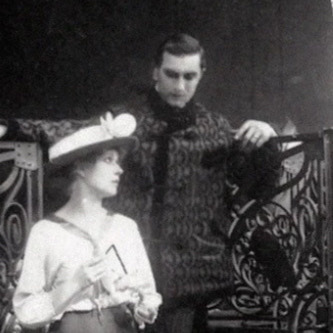
Lugosi in Küzdelem a Létért (The Leopard), a 1918 Hungarian silent film.

In Daughter of the Night, or Der Tanz auf dem Vulkan ‘The Dance on the Volcano’ (1920), a German silent film.
Finally, The Raven (1935), an American film:

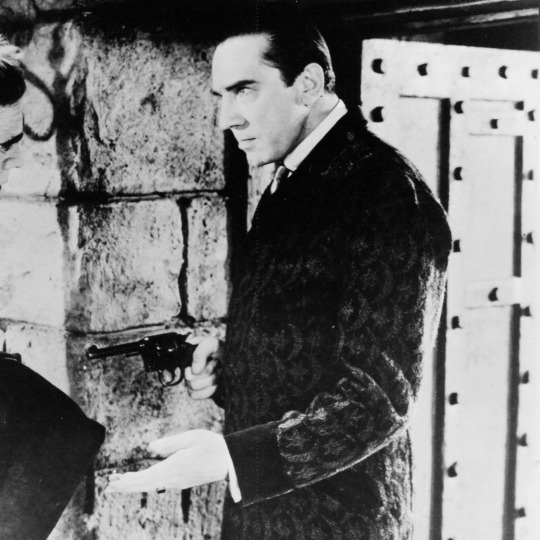
Aside from me wanting to do the girl-steals-a-guy’s-hoodie-thing to a man in the 1930’s, I thought it was a neat little fact about Béla.
#bela lugosi#bela dracula lugosi#béla lugosi#dracula#hungarian actor#old hollywood#vintage#actor#vintage horror#the raven 1935
59 notes
·
View notes
Text
Peter Lorre & Celia Lovsky
Let's have a round-up!
1929

Peter Lorre and Celia Lovsky in the Black Forest of southwestern Germany, December. (Peter proposed to Celia at Christmas that year!)
1932

Peter and Celia back in the Black Forest, on holiday.
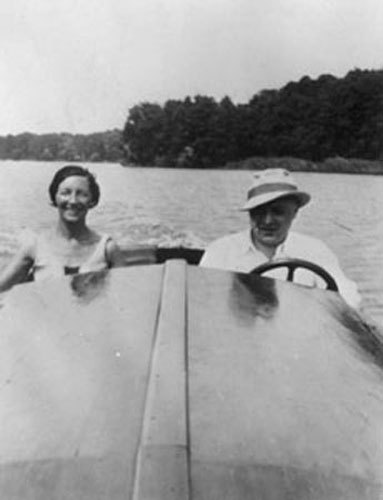
Peter and Celia motor-boating on der Wannsee, in the southwestern Berlin borough of Steglitz-Zehlendorf.
1934


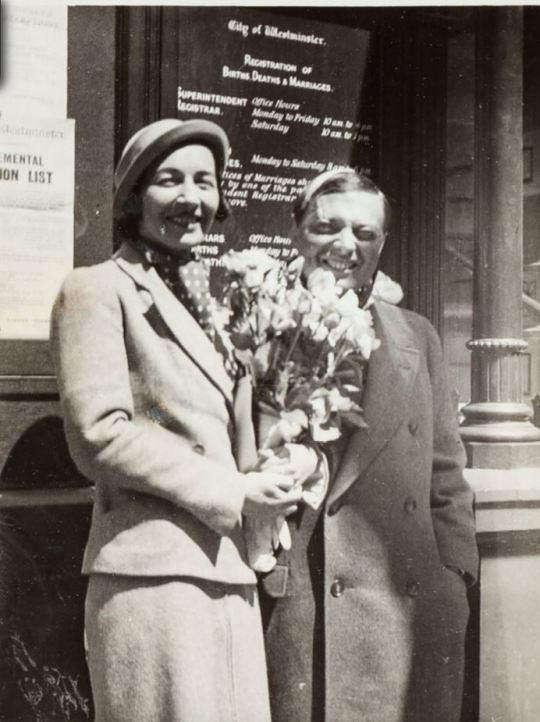
Marriage time!

July 18, leaving London for Hollywood.
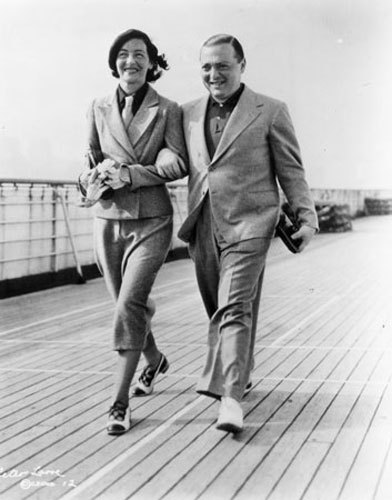
Peter and Celia aboard the Cunard White Star Liner Majestic bound for New York, mid-July.
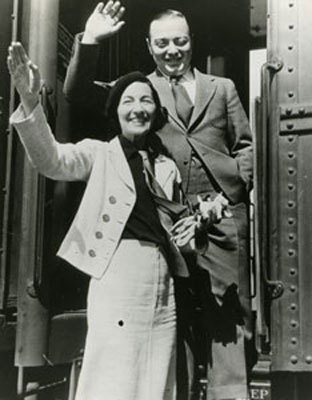
I'm not sure if the above is a 1934 picture or not, but they did have to take a train again once they got off the oceanliner...
More under the cut
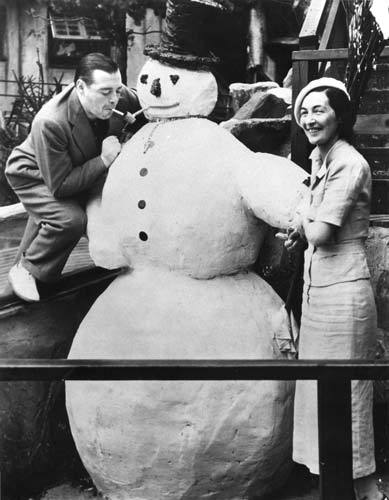
On the way to Hollywood in July, Peter and Celia changed trains in Chicago and took time to visit the 1933-34 World’s Fair. Peter is pretending to light his cigarette from a snowman in the Black Forest Village.

Also in July, Peter and Celia rented a house on 326 Adelaide Drive in Santa Monica. Whether or not they're really going to play badminton at that moment, that eyebrow steals the show.

But they did like to play!
1935
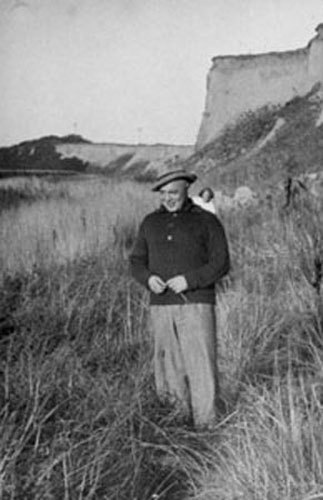
Peter and Celia taking a walk in the hills outside Santa Monica. His head was shaved for his role as Dr. Gogol in "Mad Love."

Peter and Celia arriving on the 20th Century.

Peter and Celia - I am not sure where they are.

Peter and Celia.
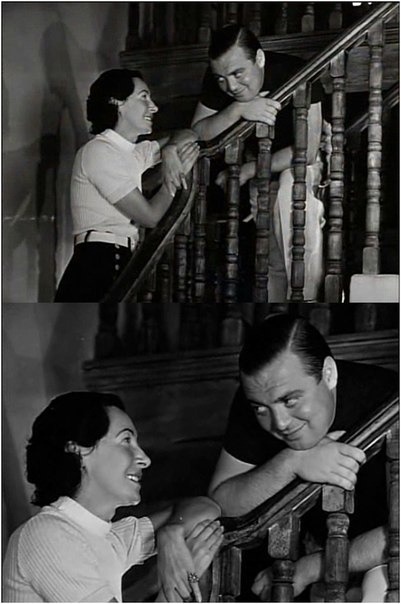


Peter and Celia, Columbia photoshoot.



The above three pics are Peter and Celia at a premiere, possibly for a Shirley Temple movie. Or something else.
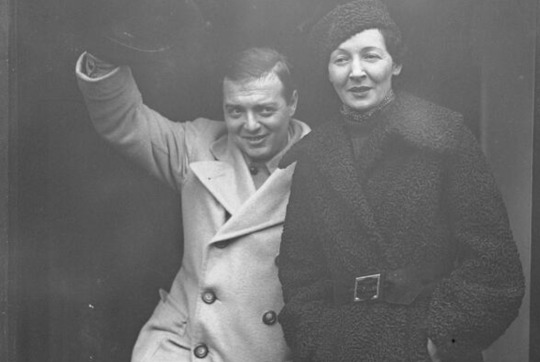
Peter and Celia arriving in Southhampton, England, Nov 7.
1936
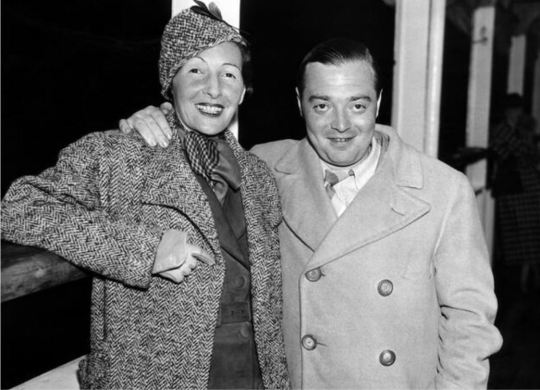
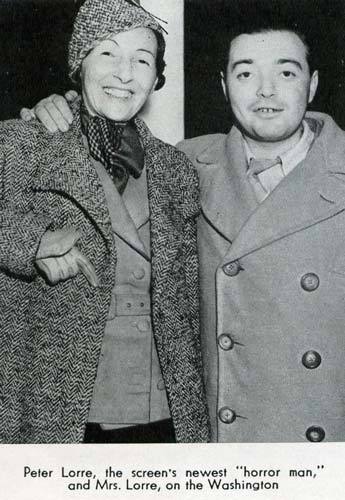
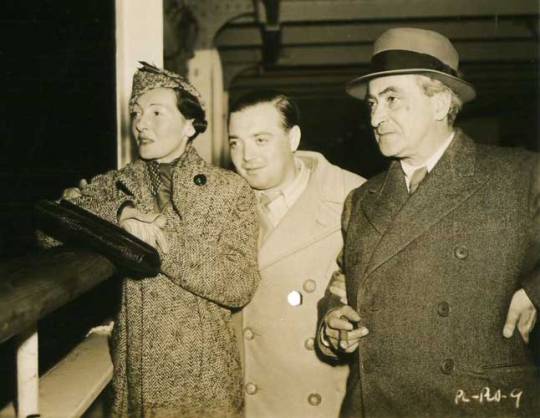
Celia, Peter, and German screenwriter and film director Berthold Viertel arrive in New York aboard the S.S. Washington, April 29, after "Secret Agent" was done filming.


Peter and Celia arriving in Hollywood.
Happy New Year
I don't know which new year it is, but it seems fitting to end this set with it:
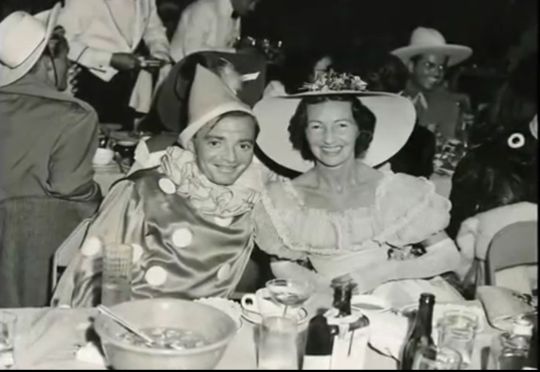
24 notes
·
View notes
Note
what do you recommend for pre-70s horror? 👀
well of course you have the classic monster flicks like phantom of the opera (1925), frankenstein (1931), bride of frankenstein (1935), the curse of frankenstein (1957), the invisible man (1933), creature from the black lagoon (1954), nosferatu (1922), dracula (1931), and dracula (1958). house on haunted hill (1959) is a classic and such a good fun mystery horror. you've also got night of the living dead (1968) if you want zombies and a good thrill with a good message. the innocents (1961) if you want a bit more mystery but with more serious melodrama this time. the comedy of terrors (1963) is a good one if you want comedy and two guys (The horror guys of the time aka peter lorre and vincent price) getting into hijinks and shenanigans. the city of the dead (1960) is good for an atmospheric witchy / ghost town horror and stars christopher lee (another horror icon of this time). the cabinet of dr. caligari (1920) is THE horror film and nearly every horror film after it took from it and it is a huge inspiration throughout history and is seen by many as the first true horror film especially when looking at it's cultural significance + it's a great gothic german expressionist horror with a killer lead character who we all love. if you think you'd enjoy more edgar allen poe adaptations starring vincent price (because i know i do) there's the masque of the red death (1964), the pit and the pendulum (1961), house of usher (1960), and the raven (1963). for extra vincent price there's also the haunted palace (1963) which is fun if you enjoy gothic romance horror and want to see a man being deranged and strange, the bat (1959) which is another murder mystery, and the tingler (1959) which you should just see for yourself i think! the hound of the baskervilles (1959) is a sherlock adaptation starring christopher lee again And peter cushing (who you will find in maaanyyy movies of this time yaaayy we love them!) + it's a classic hammer horror film! night tide (1961) which is a spooky atmospheric seaside horror about a maybe-mermaid. and last but not least for now, black sunday (1960) which again i think you just have to see for yourself! and honestly that goes for all of these recs because as hard as i try to give a very small description about them to peak someone's interest it's way too hard to do that and actually be successful at it... just trust me <3 also here is an additional list of just every pre-70s horror film i've seen so far
20 notes
·
View notes
Text
"From your mother?"
2 notes
·
View notes
Video
Jarmila Novotna by Truus, Bob & Jan too! Via Flickr: German postcard by Ross Verlag, no. 6837/1, 1931-1932. Photo: Walter Firner, Berlin. Czech soprano Jarmila Novotná (1907-1994) was one of the world-renowned opera luminaries of the 20th Century. Her film appearances were unfortunately few and far between. Jarmila Novotná was born in in Prague, Czech Republic in 1907. She studied singing with Emmy Destinn. In 1925, the 17-years-old Novotná made her operatic debut at the Prague Opera House as Marenka in Bedřich Smetana's Prodaná nevěsta (The Bartered Bride). Six days later, the lyric soprano sang there as Violetta in Giuseppe Verdi's La traviata. The following year, she made her film debut in the silent film Vyznavaci slunce/The Sun Disciples (Václav Binovec, 1926), starring Luigi Serventi. In 1928 she starred in Verona as Gilda opposite Giacomo Lauri-Volpi in Verdi's Rigoletto and at the Teatro San Carlo in Naples as Adina opposite Tito Schipa in Gaetano Donizetti's L'elisir d'amore. In 1929 she joined the Kroll Opera in Berlin, where she sang Violetta as well as the title roles of Giacomo Puccini's Manon Lescaut and Madama Butterfly. When talking pictures arrived, she headlined in German films like Brand in Der Oper/Fire in the Opera House (Carl Froelich, 1930), with Gustaf Gründgens, Der Bettelstudent/The Beggar Student (Victor Janson, 1931), and the film version of The Bartered Bride, Die Verkaufte Braut (Max Ophüls, 1932). Hal Erickson at AllMovie on Die Verkaufte Braut (1930): “The original libretto, involving the comic misadventures of two mismatched couples, is given a respectable amount of attention, but the film's biggest selling card is the photographic dexterity of Max Ophuls, who never met a camera crane he didn't like. Since filmed opera was seldom big box-office in 1932, Ophuls concentrates on the farcical elements of the story; especially worth noting are comic contributions by Paul Kemp and Otto Wernicke, who seldom let their German film fans down. Curiously, star Jarmila Novotna, whose ‘live’ appearances in The Bartered Bride were much prized by contemporary critics, doesn't come off all that well in this film version.” Other films followed such as Nacht Der Grossen Liebe/Night of the Great Love (Geza von Bolvary, 1933) with Gustav Fröhlich. In January 1933 she created the female lead in Jaromir Weinberger's new operetta Frühlingsstürme (Spring Storms), opposite Richard Tauber at the Theater im Admiralspalast, Berlin. This was the last new operetta produced in the Weimar Republic, and she and Tauber were both soon forced to leave Germany by the new Nazi regime. Jarmila Novotnà returned to Czechoslovakia to star in the film Skrivanci pisen/Lark's Songs (Svatopluk Innemann, 1933). In 1934, she left for Vienna, where she created the title role in Franz Lehár's operetta Giuditta opposite Richard Tauber. Her immense success in that role led to a contract with the Vienna State Opera, where she was named Kammersängerin. She also appeared there with Tauber in The Bartered Bride and Madama Butterfly. In the cinema, she starred in the Austrian operetta film Frasquita (Karel Lamac, 1934) with Heinz Ruhmann, the Austrian romantic thriller Der Kosak und die Nachtigall/The Cossack and the Nightingale (Phil Jutzi, 1935) with Iván Petrovich, and in the French-British operetta film La dernière valse/The Last Waltz (Leo Mittler, 1935), which was made in two language versions. She then left the film industry to concentrate on her stage work with the Viennese State Opera. After the Anschluss of Austria, she had to leave Vienna. In January 1940 she made her debut with the Metropolitan Opera in New York, as Mimí in Puccini's La bohème. From 1940 to 1956, Novotná performed regularly at the Met. In 1946 she returned before the cameras in a straight dramatic role in the Hollywood production The Search (Fred Zinnemann, 1946), starring Montgomery Clift. The Search is a semi-documentary film on the plight of WWII orphans. Novotná played a Czech mother who has lost contact with her young son when they were in Auschwitz and she now travels from one refugee camp to another in search of him. Novotna's then played turn of the century diva Maria Selka in the biopic The Great Caruso (Richard Thorpe, 1951), featuring Mario Lanza. The film traces legendary tenor Enrico Caruso's ascension from adolescent choir singer in Naples to the uppermost ranks of the opera world. Mario Lanza's tenor voice made this film one of the top box-office draws of 1951, and this helped to popularize opera among the general public. On TV she appeared in The Great Waltz (Max Liebman, 1955), which charts the life and times of composer Johann Strauss, Jr. She also played Hans’ mother in the TV musical Hans Brinker, or the Silver Skates (Sidney Lumet, 1958), starring Tab Hunter. Her last screen appearance was as an interviewee in the documentary Toscanini: The Maestro (Peter Rosen, 1985). At 85, Jarmila Novotná passed away in 1994 in New York. Sources: Hal Erickson (AllMovie), Wikipedia, and IMDb.
#Jarmila Novotna#Jarmila#Novotna#Actress#Actrice#European#Film Star#Cinema#Cine#Kino#Film#Picture#Screen#Movie#Movies#Filmster#Star#Vintage#Postcard#Carte#Postale#Cartolina#Tarjet#Postal#Postkarte#Postkaart#Briefkarte#Briefkaart#Ansichtskarte#Ansichtkaart
6 notes
·
View notes
Text
Birthdays 12.1
Beer Birthdays
William Krug (1857)
Randy Mosher (1952)
RJ Trent (1968)
Susan Boyle
Five Favorite Birthdays
Morris; Belgian cartoonist (1923)
Mary Martin; actress and singer (1913)
Jeremy Northam; actor (1961)
Jaco Pastorius; jazz bassist (1951)
Richard Pryor; comedian, actor (1940)
Famous Birthdays
Andrew Adamson; New Zealand film director (1966)
Woody Allen; comedian, writer, film director (1935)
Carol Alt; model. actor (1960)
Micheline Bernardini; French dancer and model (1927)
Eric Bloom; rock guitarist (1944)
Jan Brett; author and illustrator (1949)
Candace Bushnell; writer (1958)
Richard Carrier; author (1969)
Billy Childish; English singer-songwriter, guitarist, and painter (1959)
Jonathan Coulton; singer-songwriter and guitarist (1970)
Julee Cruise; singer-songwriter, musician, and actress (1956)
John Densmore; rock drummer (1945)
David Doyle; actor (1929)
Étienne Maurice Falconet; French sculptor (1716)
Matt Fraction; comic book writer (1975)
Steve Gibb; singer-songwriter and guitarist (1973)
Sophie Guillemin; French actress (1977)
Judith Hackitt; English chemist (1954)
Annette Haven; adult actress (1954)
DeSean Jackson; football player (1986)
Tahar Ben Jelloun; Moroccan author and poet (1944)
Jonathan Katz; comedian and actor (1946)
Clark Kent; fictional character, Superman
Richard Keith; actor and drummer (1950)
Martin Klaproth; German chemist (1743)
Zoë Kravitz; actress, singer, and model (1988)
Jerry Lawson; electronic engineer and inventor (1940)
Jimmy Lyons; saxophonist (1931)
Emily McLaughlin; actress (1928)
Bette Midler; actor, singer (1945)
Bart Millard; singer-songwriter (1972)
Julia A. Moore; poet (1847)
Emily Mortimer; actor (1971)
Sandy Nelson; rock drummer (1938)
Jim Nesbitt; singer-songwriter and guitarist (1931)
Eligiusz Niewiadomski; Polish painter (1869)
Gilbert O'Sullivan; pop singer (1946)
Isaiah "Ikey" Owens; keyboard player (1975)
Billy Paul; soul singer (1934)
Chris Poland; guitarist and songwriter (1957)
Chanel Preston; porn actress (1985)
Lou Rawls; singer (1933)
Martin Rodbell; scientist (1925)
John Schlimm; writer (1971)
Karl Schmidt-Rottluff; German painter (1884)
Dick Shawn; comedian, actor (1923)
Sarah Silverman; comedian, actor (1970)
Rex Stout; English writer (1886)
Robert Symonds; actor (1926)
Malachi Throne; actor (1928)
Charlene Tilton; actor (1958)
Lee Trevino; golfer (1939)
Jane Turner; Australian actress (1960)
Marie Tussaud; wax modeler-maker (1761)
Mihály Vörösmarty; Hungarian poet (1800)
Treat Williams; actor (1951)
Vesta Williams; singer-songwriter and actress (1957)
Minoru Yamasaki; architect (1912)
2 notes
·
View notes
Text
Brigitte Helm

Vintage German postcard. Ross Verlag, Berlin, No. 4380/1, c. 1929. Photo by E.O. Hoppé, London.
German actress Brigitte Helm (1908-1996) is still famous for her dual role as Maria and her double the evil Maria, the Maschinenmensch, in the silent SF classic Metropolis (Fritz Lang, 1927). After Metropolis she made a string of over 30 films in which she almost always had the starring role. She easily made the transition to sound films, before she abruptly retired in 1935.
25 notes
·
View notes
Text
Directory
Hello! I figured its time to make a blog tag guide for all your post finding needs. All my posts are tagged with a shorthand tag, while original posts have more thorough tagging. I have also added a list of links to my various Holmes playlists, where you can watch adaptations and listen to themes.
Join the community @@holmesian-mantlepiece
All original posts: #sherlock holmes
#acd: posts referencing Sir Arthur Conan Doyle himself, the original text of the ACD canon Holmes, or other mentions of specifically ACD Holmes. Original posts: #sir arthur conan doyle
#book cover: photos of book covers or spines (generally with the exception of comic books)
#newspaper: newspaper or magazine mentions of Sherlock Holmes
#advertising: advertising using Holmes imagery
#comics: comics or comic books referencing Sherlock Holmes. Original posts about the Dynamite comics: #dynamite holmes.
#museum: photos of the Sherlock Holmes Museum in London.
#location: Holmesian locations other than the museum, often referring to the Sherlock Holmes pub, various cafes, or statues.
#paget: illustrations by Sidney Paget
#illustration: illustrations not by Sidney Paget.
#meme: memes and textposts
TV Shows and Movies (in chronological order)
William Gillette in plays (1899) and "Sherlock Holmes" (1916): #gillette
"Sherlock Holmes" with John Barrymore (1922): #barrymore
"Sherlock Jr." directed by and featuring Buster Keaton (1924): #jr
Arthur Wontner films "The Sleeping Cardinal" (1931), "The Missing Rembrandt" (1932), "The Sign of Four: Sherlock Holmes' Greatest Case" (1932), "The Triumph of Sherlock Holmes" (1935), and "Silver Blaze" (1937): #wontner
"Sherlock Holmes" with Basil Rathbone (1939-46): #rathbone
"Sherlock Holmes" with Ronald Howard (1954): #howard #ronald howard
Christopher Lee in "Sherlock Holmes and the Deadly Necklace" (1962) and other productions: #lee
"Sherlock Holmes" with Douglas Wilmer (1964-1965, plus other appearances): #wilmer
"Sherlock Holmes" with Peter Cushing (1968): #cushing
"The Private Life of Sherlock Holmes" directed and written by Billy Wilder (1970): #tplosh #the private life of sherlock holmes
Theater productions (1970s) and "Interior Motives" (1976) with Leonard Nimoy: #nimoy
"The Adventure of Sherlock Holmes' Smarter Brother" written, directed, and featuring Gene Wilder (1975): #brother
"The Seven Percent Solution" written by Nicholas Meyer and featuring Nicol Williamson (1976): #seven percent
"Murder by Decree" with Christopher Plummer (1979): #decree #murder by decree
"Sherlock Holmes and Doctor Watson" with Geoffrey Whitehead and Donald Pickering (1979): #whitehead
"The Adventures of Sherlock Holmes and Dr. Watson" with Vasiliy Livanov (Soviet Holmes) (1979-1986): #livanov
"The Hound of the Baskervilles" with Tom Baker (1982): #baker
Ian Richardson in "The Sign of Four" (1983) and "The Hound of the Baskervilles" (1983) and other productions: #richardson
"The Adventures of Sherlock Holmes" with Jeremy Brett (Granada) (1984-94): #granada #granada holmes
"Young Sherlock Holmes" directed by Barry Levinson (1985): #young #young sherlock holmes
"Detective Conan"/"Case Closed" manga by Gosho Aoyama (1994) and anime (1996): #case closed
"Sherlock Holmes" (2009) and "Sherlock Holmes: A Game of Shadows" (2011) directed by Guy Ritchie and featuring Robert Downey Jr.: #rdj
"Elementary" with Johnny Lee Miller and Lucy Liu (2014-2019): #elementary
"Moriarty the Patriot" manga (2016) and anime (2020): #ynm
#german: German productions of Sherlock Holmes, such as “Der Hund von Baskerville” (1937) and "Sherlock Holmes" with Erich Schellow (1967)
#animated: Animated series and references to Sherlock Holmes, such as "Sherlock Hound" (1984), "The Great Mouse Detective" (1986), and "Sherlock Holmes in the 22nd Century" (1999)
#theater: Theater productions about Sherlock Holmes
#playbill: Playbills for Holmesian theater productions, including William Gillette's play
#radio: Audio series productions relating to Sherlock Holmes, including "The New Adventures of Sherlock Holmes" (1939-47), "Moriarty: The Devil's Game" (2022), and "Sherlock & Co." (2023)
#multi: posts that combine several adaptations of Sherlock Holmes in one.
Video Games- #video game: (mostly original) posts about video games
#frogwares: content pertaining to the Sherlock Holmes game series by Frogwares. Original posts are under #frogwares sherlock
#ace attorney: content relating to the game "The Great Ace Attorney Chronicles" (2021)
Merchandise- #merchandise: physical merchandise relating to Sherlock Holmes. A non-exhaustive list of subcategories:
#stuffed animal
#doll
#mini figure
#ceramics
#teapot
#ornament
#sweatshirt
#sweater
#tea blend
#playing cards
#other: Everything else! Usually non-listed adaptations or crossovers.
*Please note that none of my posts are intended to be advertisements or promotions, I just like collecting different interpretations of the great detective.
Links
My playlists:
Miscellaneous adaptations
German Holmes
Christmas with Holmes
Spotify playlist of musical themes
Other folks playlists I use for shows:
Granada Holmes
Howard/1954 Holmes
Douglas Wilmer Holmes (1964)
Young Sherlock Holmes: The Mystery of the Manor House (1982)
Sherlock Hound
Sherlock Holmes in the 22nd Century
Sherlock Mondays (2023 verbal annotation of Holmes stories by the Rosenbach museum)
Sherlock Holmes audio dramas by Big Finish
My DMs, asks, and submissions are always open for those interested! Let me know if you'd like me to tag something for you, or find an adaptation for you. Ask questions, or just chat. See ya!
13 notes
·
View notes
Text
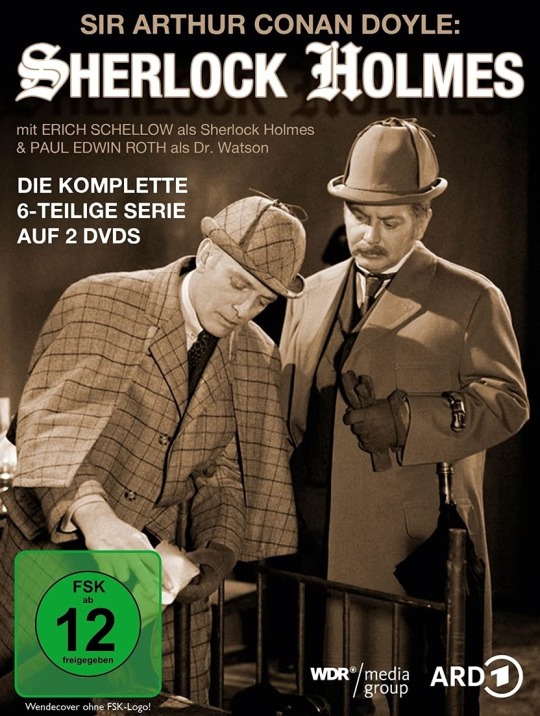
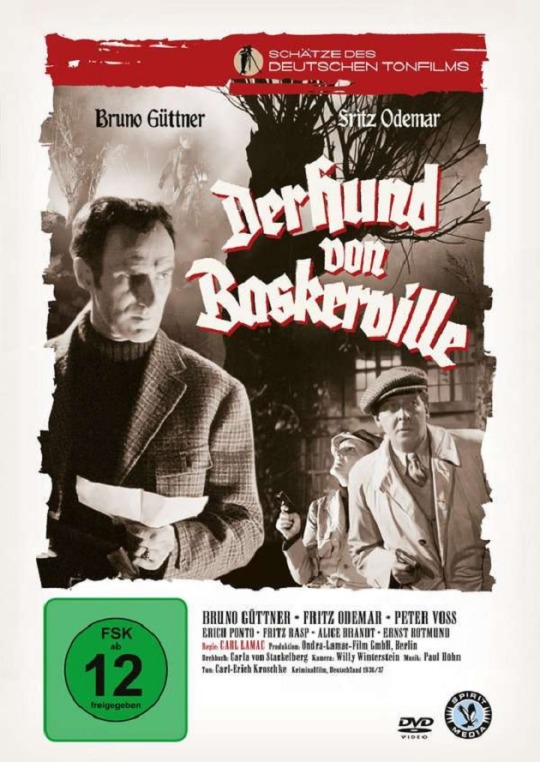
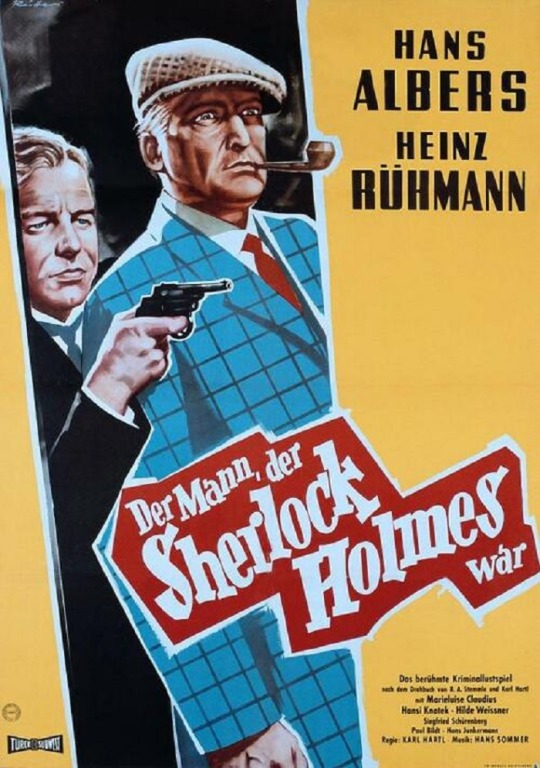
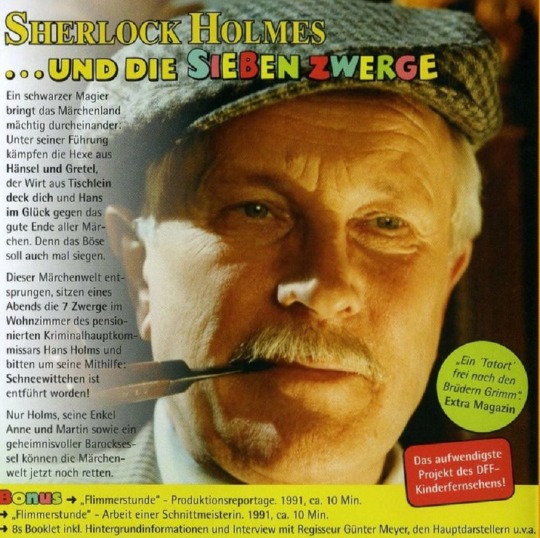
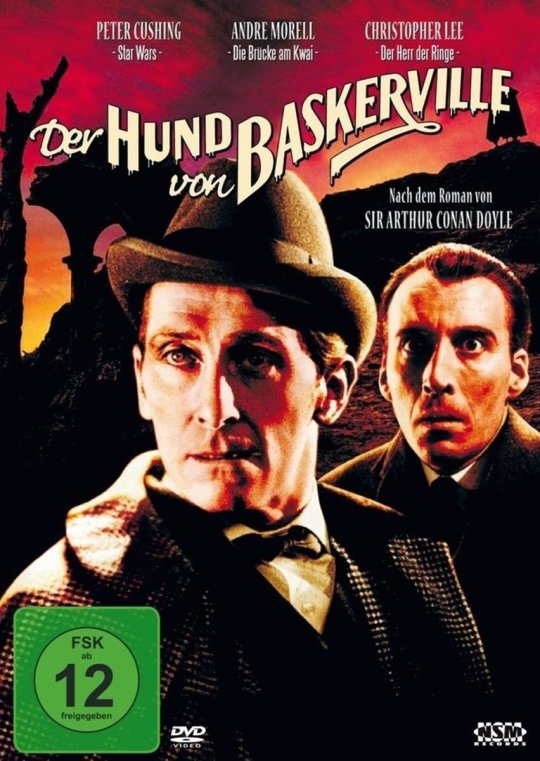
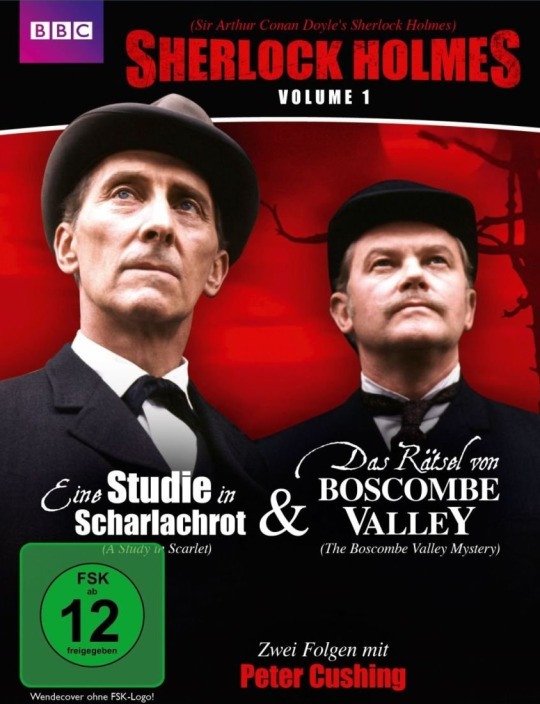

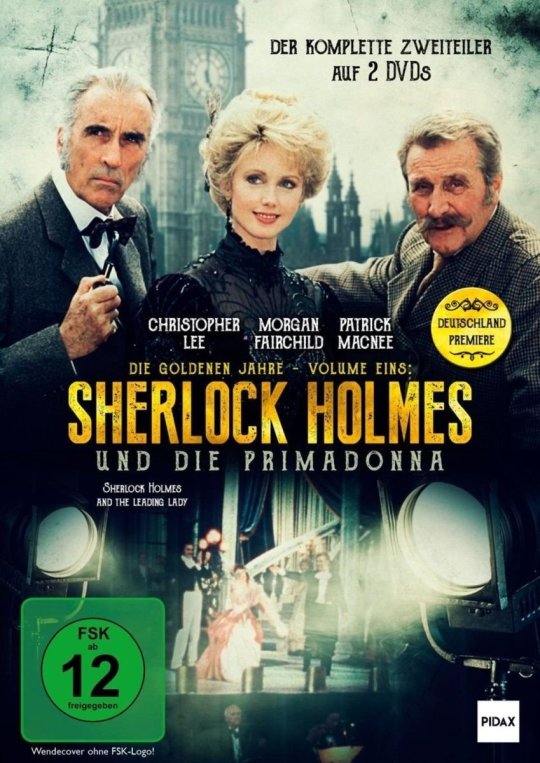
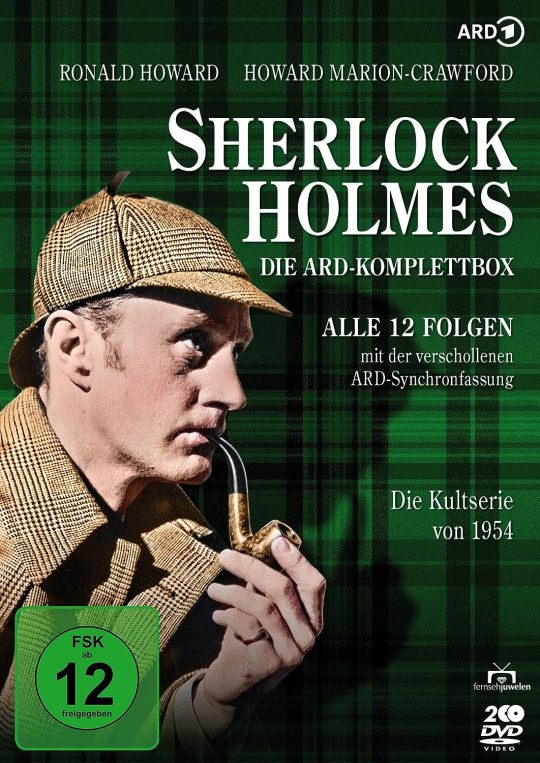
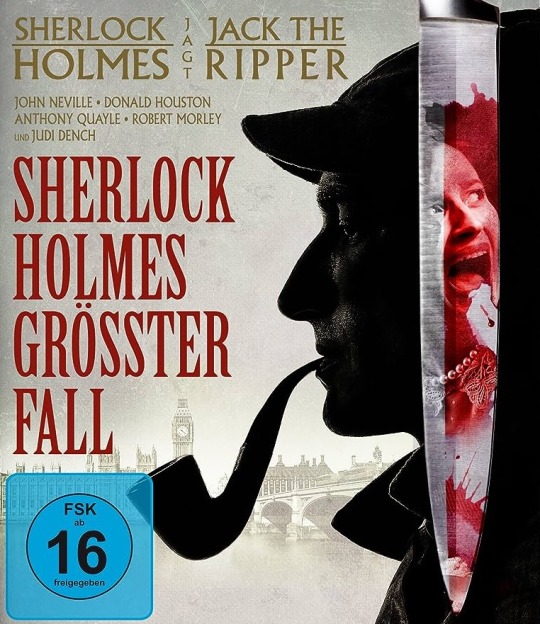
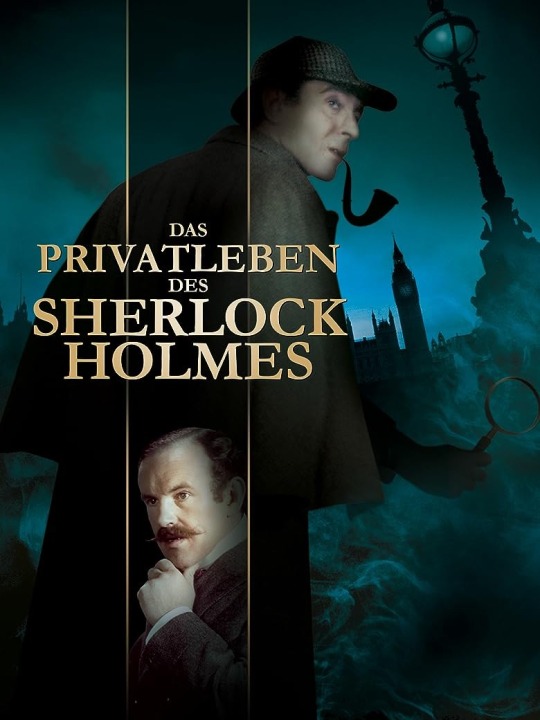
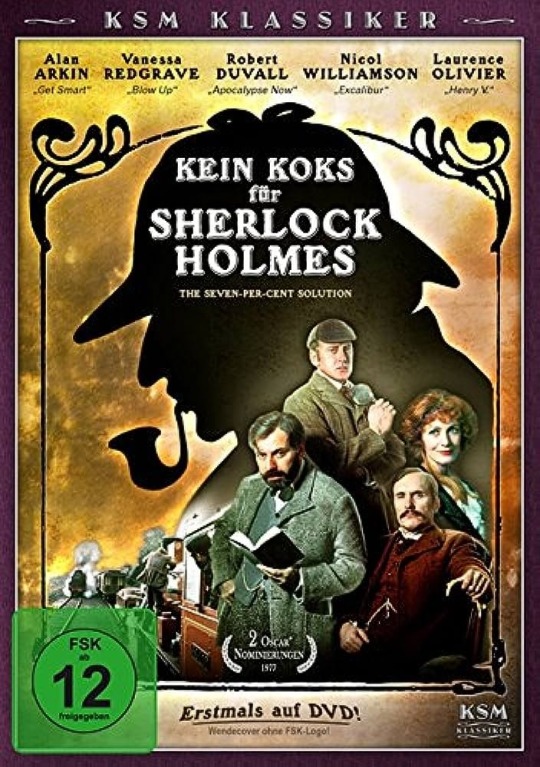
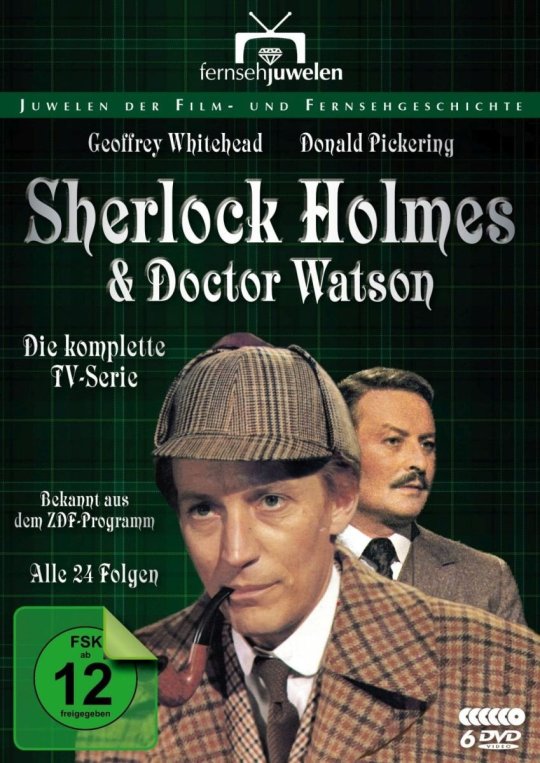
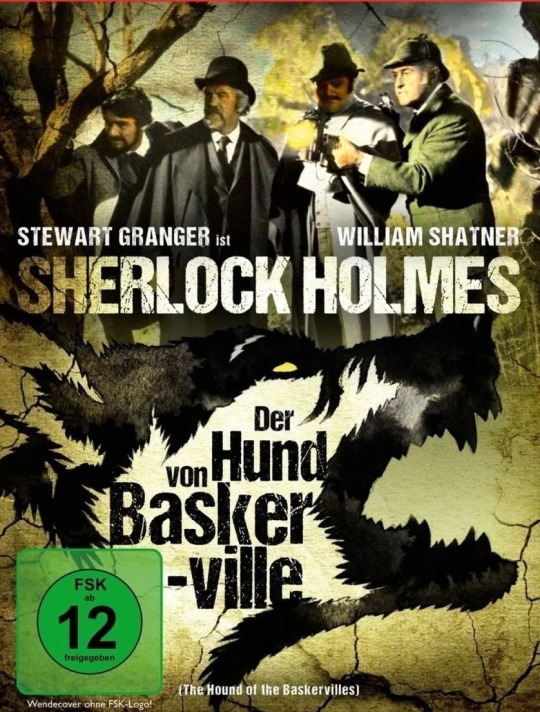
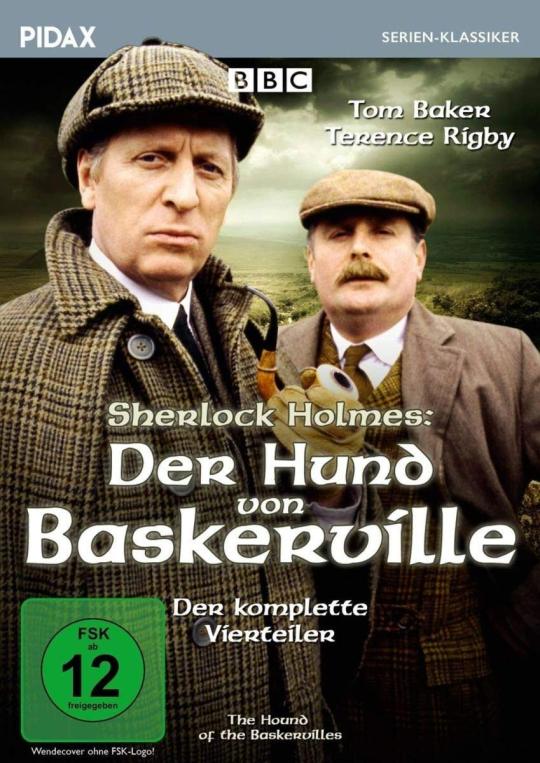
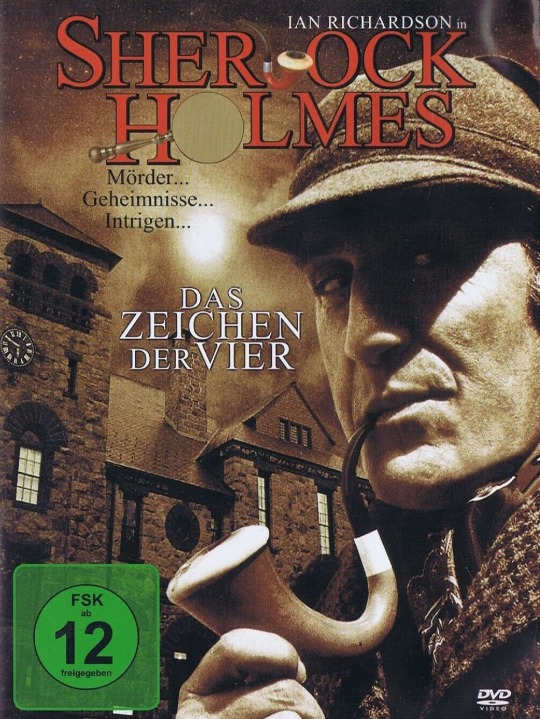
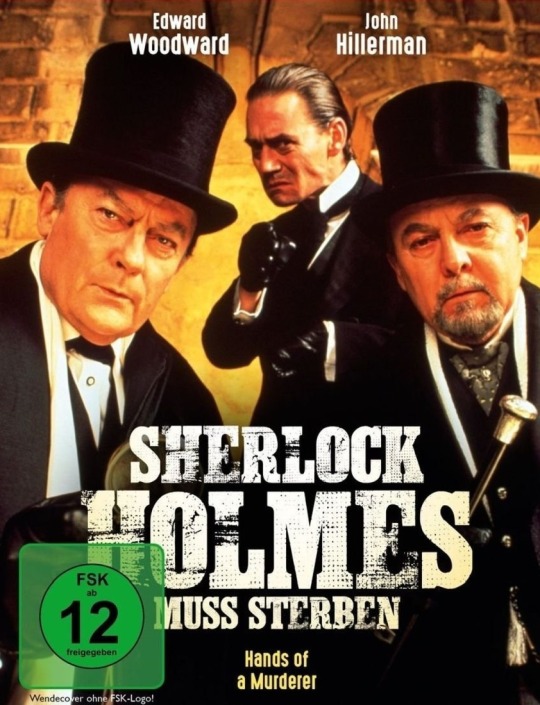
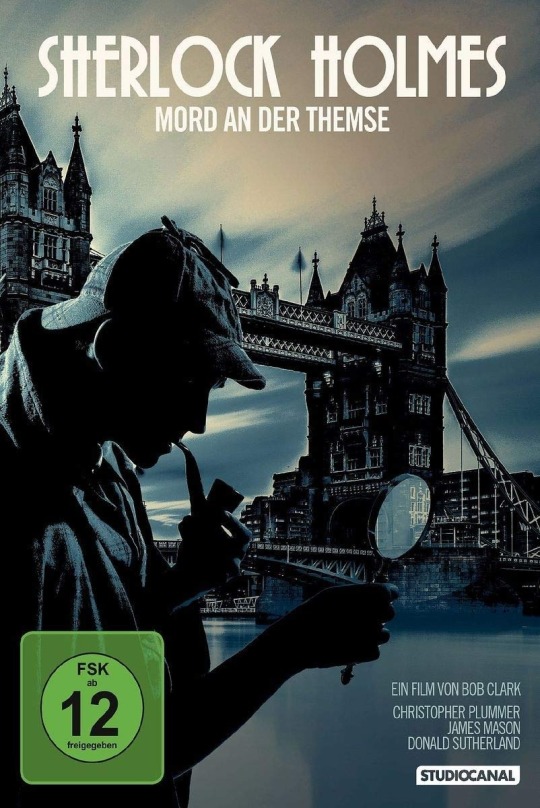
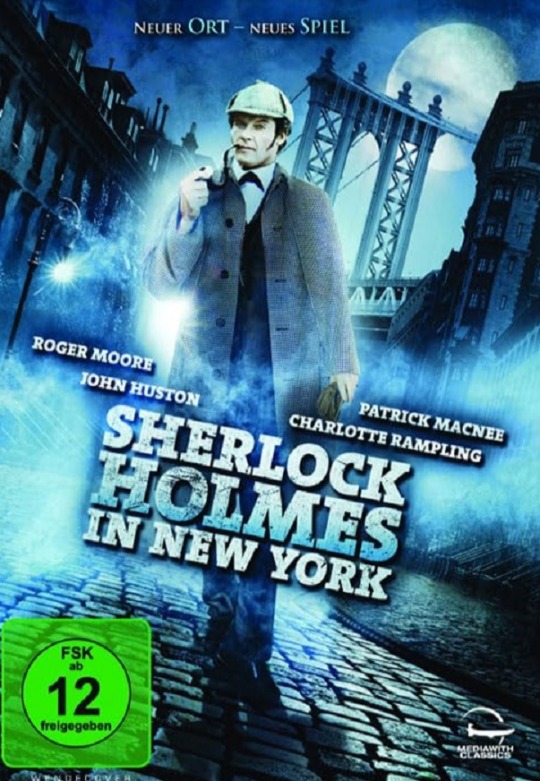

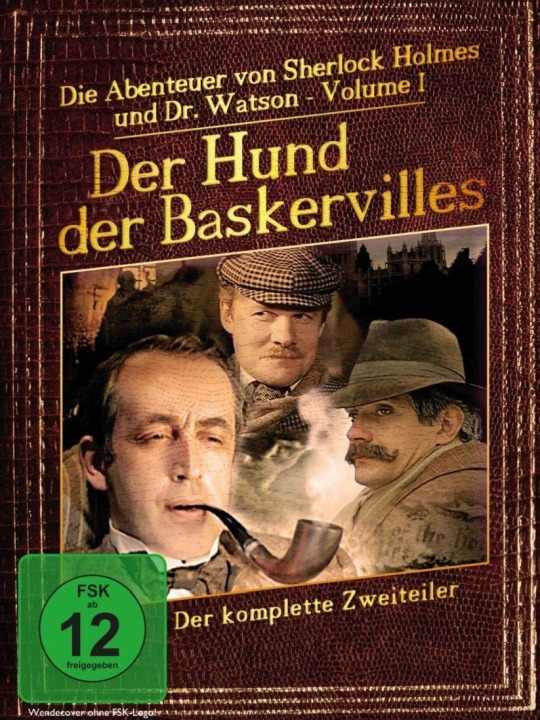
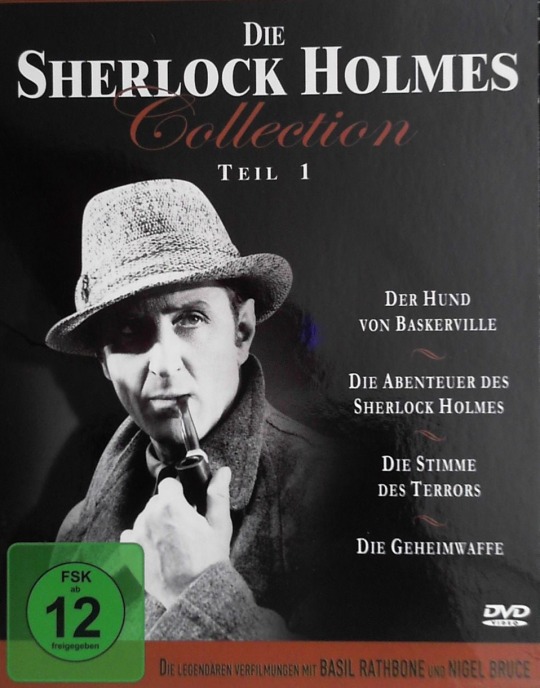
Sherlock Holmes and his faithful friend Dr. Watson have a very long tradition over here in Germany. Personally I’m an avid fan since my teens when I watched “The Hound of the Baskervilles” (1939) starring the immortal Basil Rathbone and Nigel Bruce when it was first broadcast on East German television in 1984.
Nearly all important film adaptions of the adventures of Sherlock Holmes and Dr. Watson have been dubbed and broadcast in Germany either in the cinema or in television. Here are a few examples:
In 1969 and in the early and mid Eighties East German television first dubbed and broadcast nearly all movies starring Basil Rathbone and Nigel Bruce. All films about the Nazi issue were only dubbed after the fall of the wall. All films are relaesed on DVD and they are are frequently repeated. Theses films are so hugely popular over here that Basil Rathbone is considered as the epitome of Sherlock Holmes by most viewers. For me personally he is the reason for my lifelong enthusiasm for Sherlock Holmes. “The Hound of the Baskvervilles” in the first German dubbed version from 1984: https://youtu.be/sD9M7pxP7Nk
In the early and mid Eighties East German television dubbed and broadcast the Russian television series starring Vasily Livanov and Vitaly Solomin. It was very well received but never hugely popular in the former GDR and was never repeated since its premiere. This series was never broadcast in West German television, Sadly not all dubbed films still exist in the archives but the remaining ones have been released on three DVDs in 2019 in the German version. As for me I simply love these two wonderful actors in these roles and so I made a video tribute in honour to their unforgettable portrayals: https://youtu.be/0jaSdOrntDc
The miniseries “The Hound of the Baskervilles” (1982) starring Tom Baker and Terence Rigby as Holmes and Watson were dubbed and broadcast at East German television in 1985.
In the mid and late eighties East German television dubbed and broadcast the Granada series starring Jeremy Brett as Sherlock Holmes. The series didn't achieve anywhere near the popularity with the general public as it enjoys in the English-speaking world. The series was only very rarely repeated but is now completly available on DVD.
The Hammer film “The Hound of the Baskervilles” (1959) starring Peter Cushing as Sherlock Holmes and André Morell as Dr. Watson was a great success in West Germany. The German dubbed version can be watched here: https://youtu.be/SWgtjG8O_qQ The television series starring Peter Cushing and Nigel Stock as Holmes and Watson was never broadcast on German television. The episodes were only dubbed for DVD in 2017.
In 1962 Terence Fisher directed the movie “Sherlock Holmes und das Halsband des Todes” (Sherlock Holmes and the Deadly Necklace”) starring Christopher Lee as Sherlock Holmes and Thorley Walters as Dr. Watson. The cast included numerous German and Austrian actors includig Hans Söhnker (1903 - 1981) as Professor Moriarty. Fun fact: actor Harry Wüstenhagen, who dubbed Christopher Lee in this movie also dubbed Ian Richardson, John Neville and Nicol Williams in their portrayals of Sherlock Holmes. This movie is available on DVD as well as the other ones I mentioned.
“Murder by Decree” (1979) starring Christopher Plummer and James Mason as Holmes and Watson was dubbed in West Germany and called “Mord an der Themse” (“Murder at the Thames”). It is available on DVD. The German dubbed version can be watched here: https://youtu.be/AANCR2K17F0
In 1982 West German television dubbed and broadcast the series “Sherlock Holmes and Doctor Watson” starring Geoffrey Whitehead and Donald Pickering. It was quite a success but only very rarely repeated. Meanwhile it is available on DVD. German dubbed episodes can be watched on YouTube: https
Sherlock Holmes in Germany
Alwin Neuß (1879 - 1935) was the first German actor to play the master detective in a movie. In 1914 he played Sherlock Holmes in “Der Hund von Baskerville” (”The Hound of the Baskervilles”). This silent movie was so successful that three sequels were made between 1914 and 1915. Oddly enough Dr. Watson does not appear in them at all. The first film can be watched here: https://youtu.be/PMhVAqef2nY
"Der Hund von Baskerville" (“The Hound of the Baskervilles”) made in 1929 is the last German silent movie about an adventure of Sherlock Holmes. It was directed by Richard Oswald (1880 - 1963), who also directed a German version of "The Hound of the Baskervilles" with three sequels (1914/15) starring Alwin Neuß. Oswald also wrote the screenplay for the very first film version of “The Hound of the Baskervilles” in 1914 which was directed by Rudolf Meinert. The cast is international: an American actor as Sherlock Holmes, a Russian actor as Dr. Watson, a German actor as Stapleton, an Italian actor as Sir Henry Baskerville, an Austrian actress as Beryl Stapleton, an Austrian actor as Dr. Mortimer and a German-Baltic actor as Barrymore. Remarkably, Fritz Rasp (1891 - 1976), who portrays the demonic Stapleton in this movie, plays the servant Barrymore in the sound film version "Der Hund von Baskerville" from 1937. This version is available on DVD and can be watched on YouTube: https://youtu.be/dOO1BwcpP_g
The sound film "Der Hund von Baskerville" (“The Hound of the Baskervilles”) was made in 1937 by Czech director Carl Lamač. The film has a great atmosphere and a cast of then very popular German actors. Especially Erich Ponto (to foreign film viewers very well known for his sinister role as Dr. Winkel in “The Third Man”) as Stapleton and Fritz Rasp (who mostly played sinister roles during his long film career) are great. Unfortunately actor Bruno Güttner (1909 - 1945) as Sherlock Holmes is pretty bland in his role, he even was dubbed by a more experienced actor in this film. Fritz Odemar (1890 - 1955) gives a good and amusing performance as Dr. Watson and does not portray him as a buffon. The movie is available on DVD and can be watched on YouTube: https://youtu.be/XrbMR9NZkVc
“Der Mann, der Sherlock Holmes war” (“The man who was Sherlock Holmes”) (1937) is a crime comedy directed by Austrian director Karl Hartl. The film starres Hans Albers as Morris Flynn and Heinz Rühmann as Macky McPherson. Albers (1891 - 1960) and Rühmann (1902 - 1994) were two of the most popular German actors at that time, and they are still very popular over here. The film deals with two broke English private detectives who decide to pose as Sherlock Holmes and Dr. Watson to get lucrative jobs. The official authorities obviously do not know that the English master detective and his friend are only products of the imagination of writer Sir Arthur Conan Doyle and want them to to solve the theft of the Red and the Blue Mauritius. When their real identity is established, they are taken to court for fraud. Only now writer Conan Doyle (played by actor Paul Bildt without a moustache) declares that he is the spiritual father of Holmes and Watson. As he is very satisfied with the appearance of Flynn and McPherson, they are acquitted by the court. The false Holmes and Watson even sing a song called “Jawohl, meine Herr’n” (“Yes, gentlemen”) while taking a bath. This crime comedy is very entertaining, I can't find any hints of the Nazi period it was made. The movie was released on DVD and can be watched on YouTube: https://youtu.be/vWz-ZYIKsEI
Altough Holmes and Watson were immensly popular in East Germany there was never made a movie nor a television film or series especially about them. There are only exist spoofs.
In the Seventies the drawing of the lottery numbers were enriched in East German television with short films of different genres. When the number 19 was drawn it was always a humourous crime film. In three of them appaered the English master detective Sherlock Holmes and his faithful friend Dr. Watson. In "James, der Butler" ("James, the butler") we see Ezard Haußmann, who later dubbed Vasily Livanov in "The Hound of the Baskervilles", and Hannes Stelzer. In the monochrome version of "Spuk im Schloss" ("Haunting in the castle") Jürgen Frohriep and Horst Torka played Holmes and Watson. Torka repeated his role as Watson in a new and colorized version of the same story while Alfred Struwe played Sherlock Holmes. These episodes are part of the DVD edition “Die Tele-Lotto Kurzkrimis”. Alfred Struwe returned to the role of Sherlock Holmes in 1979, when he played in a spoof with the absurd title "Kille Kille Händchen" ("Kill, kill little hand"). Photos of it can be seen here: https://www.tumblr.com/flammentanz/626097658197622784/completely-unknown-german-sherlock-holmes-in-the?source=share
The East German children movie “Unternehmen Geigenkasten” (“Operation violin case”) made in 1984 deals with two school boys who want to solve crimes like Holmes and Watson after they have seen “Der Mann, der Sherlock Holmes war” on television. This film can be watched here: https://youtu.be/5CDlfPl6ibU
“Sherlock Holmes und die sieben Zwerge” (“Sherlock Holmes and the Seven Dwarfs”) made in 1992 by director Günter meyer was one of the last big production of East German television after the fall of the wall. The eight part children series starres Alfred Müller (1926 - 2010) - a big star in East Germany - as newly retired Detective Inspector Hans Holms (the only real connection to the master detective is his name and sometimes his clothings) who looks after his grandchildren Anne and Martin while his daughter and his son-in-law are abroad. With the help of a magical armchair, Holms and his grandchildren can travel to Wonderland, where they are inter alia asked by the seven dwarfs to search for the kidnapped Snow White and meet other fairy tale characters. Their great adversary in all adventures is a demonic black magician. The whole series is available on DVD. The trailer can be watched here: https://youtu.be/blrc8cE6jSk
For a serises about famous detectives the television movie “Sherlock Holmes liegt im Sterben” (“Sherlock Holmes is dying”) was made for the West German television in 1954. It starres Ernst Fritz Fürbringer (1900 - 1988) as Sherlock Holmes and Harald Mannl (1904 - 1964) as Dr. Watson. The complete movie is lost, there is only this fragment that still exists: https://youtu.be/LGvELtv6Q10
“Der Hund von Baskerville” (“The Hound of the Baskervilles”) was made for West German televsion in 1955. It was directed by Fritz Umgelter and starres Wolf Ackva (1911 - 2000) as Sherlock Holmes and Arnulf Schröder(1903 - 1960) as Dr. Watson. I don’t know if this movie still exists in the archives.
“Das Zeichen der Vier” (“The Sign of Four”) was made for West German television in 1974 starring German actor Rolf Becker (born in 1935) and French actor Roger Lumont (born in 1934). It was never repearted since, and I don't know if it still exists in the archives. Here are Becker and Lumont:

In 1966 the television movie “Conan Doyle und der Fall Edalji” (“Conan Doyle and the case Edalji”) directed by Karlheinz Bieber was made. It starres Paul Klinger (1907 - 1971) - who mostly played likeable roles and was very popular because of it in Germany (because of his sonorous voice he also was a verya renowned voice actor) - as Sir Arthur Conan Doyle. The film is based on facts that took place from 1903 until 1907. Young Indian solictior George Edalji was exposed to racist hostilities and was wrongly accused of animal mutilations. Arthur Conan Doyle made his own investigations which led to an acquittal of Edalji. In the movie Conan Doyle uses the methods of Sherlock Holmes to solve the case. The film is available on DVD and can be watched on YouTube: https://youtu.be/32H3PmBcJrM Paul Klinger as Sir Arthur Conan Doyle:
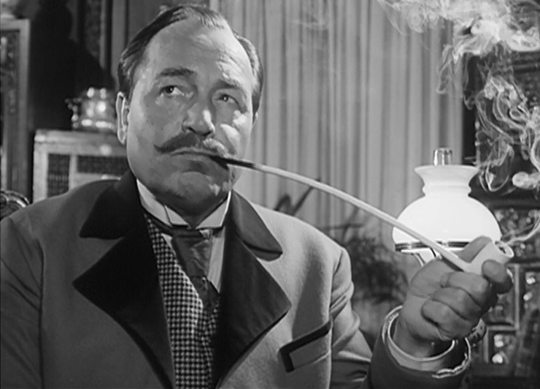
In 1968 Germany got its own Sherlock Holmes and Dr. Watson at last. In 1967 the WDR (Westdeutscher Rundfunk), a local TV channel of the West German television, produced a six episode television series about the English master detective Sherlock Holmes. Strangely enough, the series was not broadcast under the title “Sherlock Holmes” but the opening credits name the author Arthur Conan Doyle. The series was based on translated scripts written for the BBC series starring Douglas Wilmer. The series was first aired on Sunday afternoons from from October 1, 1967 to March 18, 1968.
Erich Schellow (1915 - 1995) - actually a theater star, that only rarely appeared in movies and on television (the critic Friedrich Luft said about him “He speaks like a God!”) played Sherlock Holmes, while his faithful friend Dr. John H. Watson was played by Paul Edwin Roth (1918 - 1985). The actors knew each other from their theater work in Berlin and got along very well during the filming.
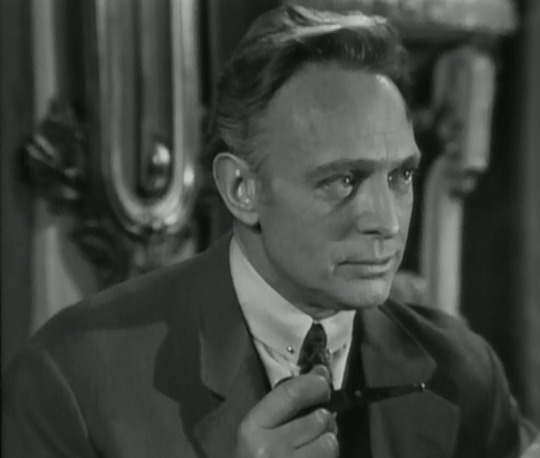
Paul May, a renowned director in film and television with a long-standig career, had a certain idea of Sherlock Holmes from the start. He wanted an impeccable, dignified, and noble master detective. To create a contrast to other television detectives at that time May avoided any action scenes. Erich Schellow wanted to play a bit more depraved Holmes including the use of cocaine but May refused strictly. In 1991 Erich Schellow was made an honorary member of the German Sherlock Holmes Society.
Paul Edwin Roth were allowed more liberties to portray Dr. Watson and he gladly took the opportunity. He is not a buffoon but instead he is amusing and witty (sometimes he even philosophizes), has a perfect name and address memory, he knows how to handle a weapon (usually his army revolver) and is a faithful friend in all situations. His favorite words are “very interesting”, a fact on which he comments ironically in “Das Haus bei den Blutbuchen” (“The Copper Beeches”)
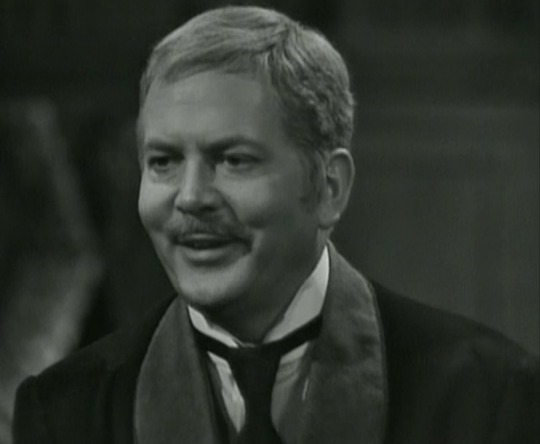
While the use of cocaine was refused by the director, the consumption of tobacco and alcohol by Sherlock Holmes and Dr. Watson is immense. Even dear Mrs. Hudson (Austrian actress Manja Kafka), who is not only a devoted maid (not a landlady as she actually is) but also amusingly cheeky, is hard-drinking. The running gag within the series is that the cane of the umbrella of Dr. Watson serves as a vessel for alcoholic beverages.
It’s incomprehensible that this wonderful series was only repeated once in 1991 and never since. Sadly Germany’s Sherlock Holmes was never given the the attention and appreciation he deserves. Fortunately this gem was released on DVD in 2012 and re-released in 2021.
For any information about Erich Schellow and Paul Edwin Roth as Holmes and Watson please check my blog.
youtube
youtube
#sherlock holmes#dr. watson#sherlock holmes in germany#german sherlock holmes#sorry for any possible mistakes#english is not my first language
30 notes
·
View notes
